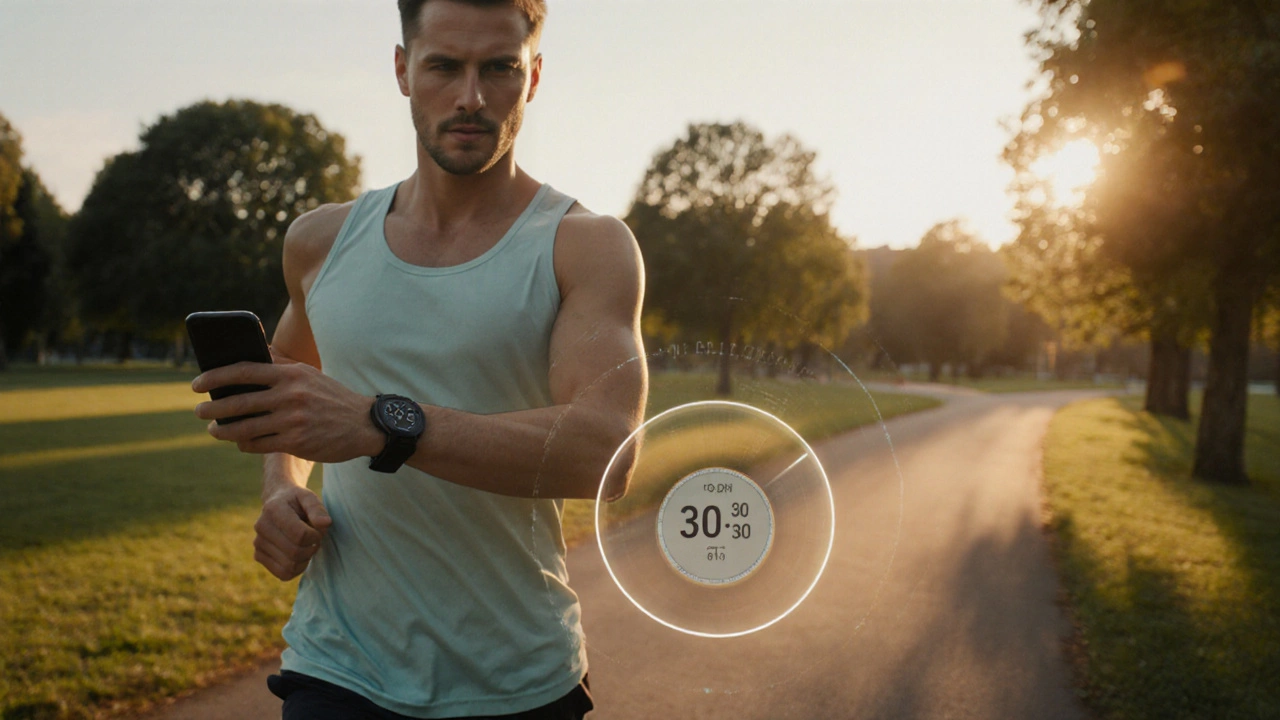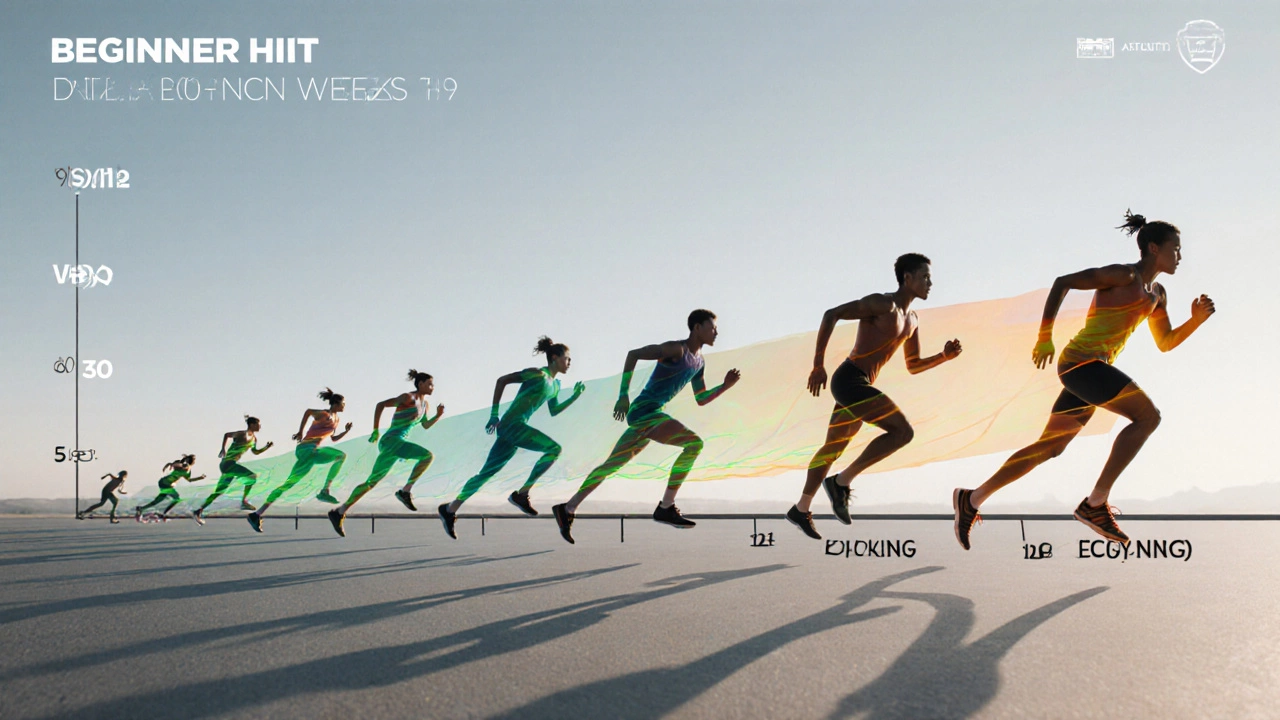
Get personalized recommendations for beginners based on your fitness level, goals, and intensity preference.
We'll show your personalized recommendation here.
Tip: Always start with a 3-minute warm-up and finish with a 3-minute cool-down.
Trying to find the sweet spot between sprinting and catching your breath? That sweet spot is called the HIIT ratio - the amount of time you spend at high intensity compared to the recovery period. For newcomers, getting the ratio right can mean the difference between a sustainable routine and a burnout. In this guide we’ll break down what a good HIIT ratio looks like for beginners, why it matters, and how to tweak it as you get fitter.
When people talk about High-Intensity Interval Training (HIIT), they usually mean short bursts of effort followed by brief recovery. The work interval is the active phase - sprinting, burpees, kettlebell swings - while the rest interval lets your heart rate drop enough to sustain the next round.
Why does the ratio matter? Your body’s ability to clear lactic acid, replenish oxygen, and stay in a target heart‑rate zone is directly tied to how long you rest. A ratio that’s too aggressive (long work, short rest) can lead to early fatigue, while a ratio that’s too easy (short work, long rest) won’t give you the cardio boost HIIT promises.
Below are the most common ratios you’ll see in starter programs. They differ in work time, rest time, and the intensity level they aim for.
| Ratio | Work Time | Rest Time | Typical Intensity (HR% of max) | Best For |
|---|---|---|---|---|
| 1:1 | 30 s | 30 s | 80‑85% | New to HIIT, building confidence |
| 1:2 | 20 s | 40 s | 75‑80% | Low‑impact, joint‑friendly sessions |
| 2:1 | 40 s | 20 s | 85‑90% | More cardio‑oriented, athletes in training |
| Tabata (2:1) | 20 s | 10 s | 90‑95% | Advanced beginners who want a quick, intense burst |
For most newbies, the 1:1 format (often called the 30/30 protocol) hits the sweet spot: it’s challenging enough to raise your VO2 max gradually, but the rest periods are generous enough to keep form intact.

Pick a ratio by checking three simple factors:
Remember, the ratio isn’t set in stone. It’s a framework you can fine‑tune as your beginner body adapts.
Put the 1:1 ratio to the test with this easy-to‑follow template. No equipment needed; you can do it at home or in a park.
This routine lasts about 20 minutes, including warm‑up and cool‑down. Use a timer or a HIIT app to keep the intervals precise.

Once you can breeze through the 30/30 session without stumbling, it’s time to nudge the numbers. Here’s a safe progression ladder:
Notice we only change one variable at a time - that prevents unnecessary spikes in fatigue and lets you track what actually improves.
Even a simple HIIT plan can go sideways if you ignore a few basics:
Hydration, breathable clothing, and a safe surface (e.g., rubber mat) also help keep the session smooth.
Aim for 15‑20 minutes total, including warm‑up and cool‑down. This keeps the stimulus effective without overwhelming a new trainee.
It’s possible, but only if you already have a baseline cardio fitness. Most beginners start with 1:1 or 1:2 to build a solid foundation first.
No. Body‑weight moves like jumping jacks, squats, and push‑ups work perfectly. If you have a jump rope or kettlebell, you can add those later.
Every 2‑4 weeks, once you feel the current ratio is easy and you can maintain form throughout.
No. Tabata uses a 20 s work / 10 s rest (2:1) format and pushes intensity to 90‑95% of max heart rate, which is too aggressive for most beginners.